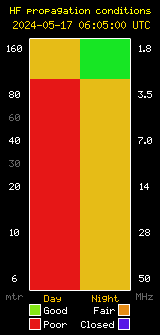Field Day 2016
This year we’re putting the “Field” back in Field Day! We will be operating from Elings Park up on the hill where the hang gliders take off. We still have several time slots to fill, so we would really appreciate your help. Operating/logging time slots are only 2 hours long, so it won’t put a very big dent in your weekend plans. Your club needs you! Let’s make this a fun field day for everyone. The plan is to bring the Rover Friday afternoon to the South Park area of Elings. Tom, N6YX expects to arrive between noon and 1 pm. He will take the road that the hang gliders use, then drive through the field to South Park area. We will need a crew of four or more to assemble the antenna and put it on the Rovers mast. The antenna only weighs 60 pounds, but it is about 12 feet long and 10 feet wide. We will test the radio and check digital modes. We should be finished before 4 pm Friday. Tom will arrive again Saturday morning about 9 am. He will work with someone else for the first shift. Shifts are two hours during the day and evening until 9 pm. Other operators / loggers will arrive for each shift. From 9 pm to about 6 am, there will be two or three for the night shift. We will operate until 11 am Sunday morning. The Rover will remain parked from Friday afternoon to Sunday about 1 pm. I don’t expect more than six people at a time. I don’t know how many from the club will be participating. We need at least 16 people for a full 24 hour operation. We need a minimum of 10 for a 12 hour operation. If you can help out with operating, logging, set-up or take-down, please contact us as soon as possible. Post expires at 11:00am on Sunday June 26th, 2016 but will still be available in the archives.









